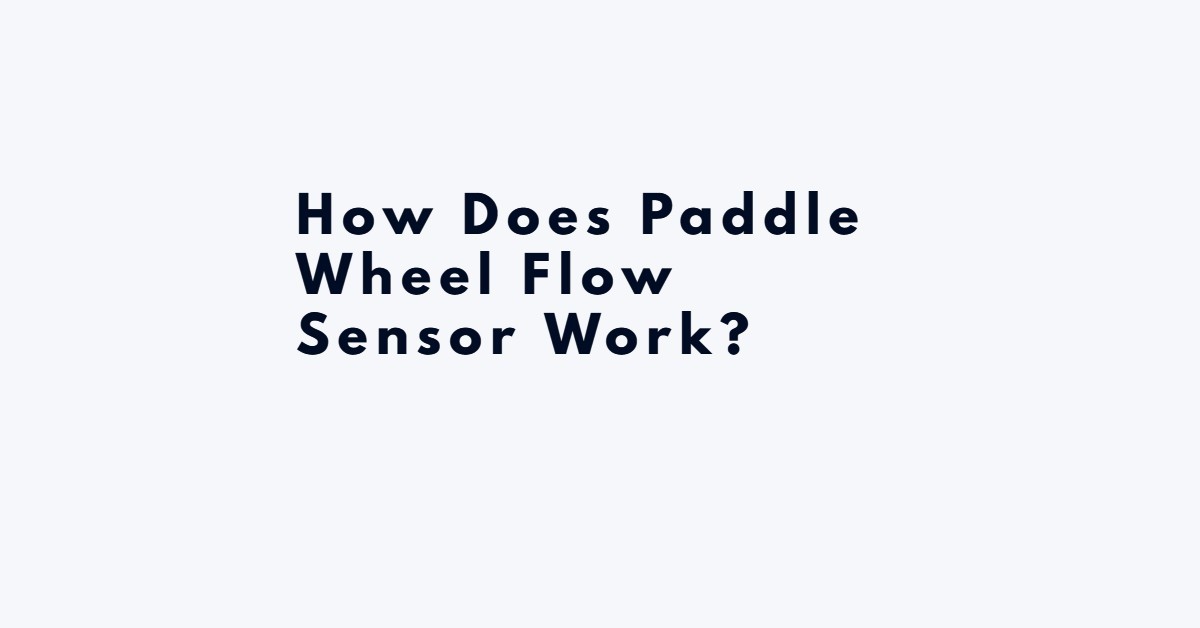When you are looking for an ideal flow sensor, you need to know what type fits your application. Learn more about the paddlewheel flow sensor and how it works.
When you want to get the best results when measuring flow rate, you have to look for a flow meter that matches your application needs. The reason being that there are numerous kinds of flow meters in the market that work differently and are designed to work properly with specific applications.
In this article, our focus is on the paddlewheel flow meter. We are going to discuss what a paddlewheel flow sensor is and how it is used in flow rate measurement. If you have been searching for a flow meter that matches your application needs, read this post for more insights about the paddlewheel flow meter.
What is a Paddlewheel Flow Sensor?
A paddlewheel flow sensor is a flow measuring instrument that operates mechanically. It has a paddlewheel fitted in it that operates freely in the path of the flowing fluid, which can either be a pipe or any other channel. The flowing liquid or gas forces the turbine to spin with its axis. The speed at which the fluid moves will determine the flow rate, which is directly proportional to the fluid’s velocity.
What makes paddlewheel flow sensors ideal water flow rate measuring instruments is their simplicity and reliability in flow rate reading? A Paddlewheel flow sensor can measure high flow rates with low-pressure loss. Although these types of flow sensors are quite versatile, they are ideal for measuring fluids with constant conditions such as water or liquids with low viscosity.
Components of a Paddlewheel Flow Sensor
To better understand how paddlewheel flow sensors work, you first have to know the various parts that this type of flow measurement device is made of. There are three major parts that make up a paddlewheel flow sensor. These components include the controller or display, the pipe fitting, and the paddlewheel. A fast rotating impeller or wheel that is fitted with magnets proportion to the flow spins when water or fluid runs through it. A paddlewheel flow sensor is an ideal tool if you are looking for accurate flow measurement.
It is also a great flow reading option if you want to reduce flow rate measurement cost.
Working Principle of a Paddlewheel Flow Sensor
In a paddlewheel flow sensor, there are rotating blades that turn as the water flows inside the pipe. As they turn, a voltage and frequency signal is produced. This voltage signal is equal to the rate of the flowing fluid. High voltage and frequency output come as a result of the fast-flowing fluid.
The paddlewheel flow sensor needs to be connected to the pipe fitting as an addition or inline. There are several fitting styles available, as well as connections and material used. Materials used can either be stainless steel or polypropylene.
When fitting a paddlewheel flow sensor, there has to be a straight pipeline running before and after the sensor. Paddlewheel flow sensors are also called Pelton wheel sensors. If you want to measure fluids such as water and water-like liquids, then a paddlewheel flow sensor is the most cost-effective device, which also provides high accuracy levels.
The Benefits of Using a Paddlewheel Flow Sensor
- Provides high flow system accuracy that is quite economical
- Low buying and installation cost since easy to set up and use
- It is an ideal water flow sensor for gravity flows since it has no pressure drop
- Installation and maintenance cost is lowered thanks to its simple insert flow meter design
You will need to pay more if you want greater accuracy levels. Compared to other water flow sensors, the paddlewheel type has superior skills. The desired flow measurement readings are accessible due to their numerous high-tech designs. Installation variables can affect how a paddlewheel flow sensor works despite the high accuracy levels it provides. The higher the accuracy it provides, the higher the price. Its superior technology provides a wide range of accuracy levels.
A paddlewheel flow sensor can be installed in many ways, including parallel or upward. Flow direction can go either way and won’t affect how the paddlewheel flow sensor works. These types of flow sensors work well with viscous fluids, provided there is a complete turbulent flow profile. When it comes to maintenance, the type of media used will determine how often maintenance is carried out.
Since paddlewheel flow sensors have moving parts, if the fluid is not clean, the dirt in it can tamper with its accuracy levels. This means that you need to carry out maintenance more frequently compared to when using clean water. If you want to increase the lifespan of your paddlewheel flow sensor, you need to use it with clean water and other non-corrosive fluids.
Conclusion
Paddlewheel flow sensors are ideal flow measurement devices because they produce high accuracy levels and are easy to use. The cost of installation is also quite low, and they don’t require special requirements. Flow direction can go either way. However, they are better used with clean fluids to prevent them from clogging or losing accuracy.
Author Bio:
Naman Modi is a Professional Blogger, SEO Expert & Guest blogger at proteusind.com, He is an Award Winning Freelancer & Web Entrepreneur helping new entrepreneur’s launches their first successful online business.
